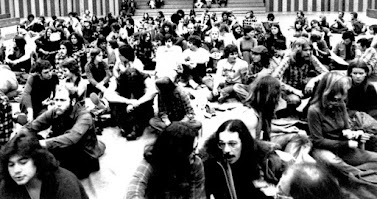There is no shortage of advice online at this time of year. There is gift advice, decorating advice and even advice on dealing with the annoying relatives at Christmas dinner. What we really need is a column where people can get last minute Christmas advice as they’re heading out the door on Christmas Eve. It might look something like this:
Dear LMS (Last Minute
Santa) – I haven’t started my shopping yet and it’s Christmas Eve. What would
you suggest I buy for my family? Since time is short, I suggest you head to the
nearest big box store and only buy items that come pre-wrapped in a holiday
box. For dad, try the 18-hole desktop executive golf course. Consider the perfumed
pencil set for mom and the Bluetooth slippers for your sister.
Dear LMS – We have a
tradition of opening one gift on Christmas Eve after church. Last year my
little brother got to open a cool gift while I opened a sweater? Try this. Each family member can open one package
or “steal” one that’s already been opened. This should lead to some quality family
time.
Dear LMS – We want to
bring a gift for our friends tonight but hesitate because we don’t want to
embarrass them if they didn’t get a gift for us. What should we do? Make the first move. Present the gifts to
them at the door. This courteously gives the host time to wrap someone else’s
gift or drive to a nearby drug store before they close.
Dear LMS – I will get
home from college at about 7 p.m. on Christmas Eve. My old high school friends
are having a really cool party tonight as well.
How long do I need to stay at my parent’s house before I can leave for
the party? There is a formula for
calculating PQT (parent quality time).
Take the number of weeks it has been since you were last home and
multiply times five to get the proper number of minutes. For example, if you
saw them at Thanksgiving, you need to make small talk for at least 20 minutes. Showers
don’t qualify as parent quality time.
Dear LMS – My kids
want Santa to bring them a drone, an Ipad and a Playstation 5. Santa is magical
they say so he should be able to bring anything they ask for. Unfortunately, my
bank account is not magical. Any advice would be helpful. It’s about time
you got some credit here. Tell them that
mommy and daddy send money to Santa on April 15 every year. Based on how big that check is, Santa decides
what he can bring. Show them the cancelled check from last year and explain
that
Dear LMS – My older sister
and her boyfriend are great people but they are lousy cooks. It’s our turn to
go to their home for Christmas and we dread it. What would you do? Instead
of the traditional hostess gift, bring a round roast with mashed potatoes and
some mixed vegetables. Explain that you are both are on a strict diet.
Dear LMS – I will
cook for hours tomorrow while my family watches football all day. They will
then devour the meal in 15 minutes and return to the TV room. Is there anything
I can do? I would start with a 7-course
meal that takes an hour to serve. Next cut the cable TV line in the yard and set
all of the DVR’s in the house to record the Little House On The Prairie holiday
marathon.
Merry Christmas to our readers. Send column suggestions and comments to flipsidecolumn@gmail.com.















